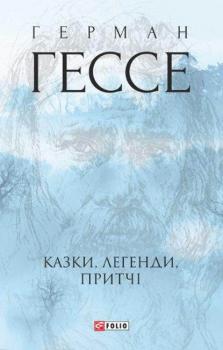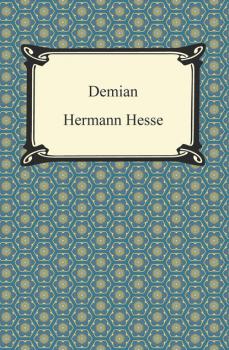ТОП просматриваемых книг сайта:
Герман Гессе
Список книг автора Герман ГессеАннотация
Роман «Деміан» – це глибоко особиста, суб’єктивно забарвлена сповідь героя. Вона виражає сподівання частини західноєвропейської інтелігенції, яка втратила віру у «стадні» ідеали попередньої епохи і стала на болісно важкий, але неминучий «шлях всередину», шлях утвердження своєї самобутності.
Кнульп – волоцюга за переконанням. Всім своїм життям, та й смертю теж, він демонструє переваги мандрівника, який відрікається від вузького осілого побуту в ім’я індивідуальної свободи. Його душа відкрита назустріч природі, красі, він цінує в людях не багатство чи суспільне становище, а душевні якості.
Аннотация
«Сиддхартха» – жемчужина прозы Германа Гессе, в которой нашли свое отражение путешествия писателя по Индии, а также его интерес к восточным религиям. Местом действия является Индия времен Сиддхартхи Гаутамы – основателя одной из наиболее глубоких и мудрых религий человечества – буддизма. В этой небольшой аудиокниге Гессе удалось объяснить европейцам ее суть, создать идеальную систему – некий свод взаимосвязанных правил – как нужно жить, как следует исправлять свои ошибки, как найти свое истинное «я». Эту притчу стоит слушать и переслушивать не из-за сюжета и в поиске новых знаний, а из-за того глубинного понимания мира, ощущения единения с окружающими, которое она дает. В издание также включена аллегорическая повесть «Путешествие в страну Востока». © Hermann Hesse, 1922, 1932 © Перевод. Н.Н. Федорова, 2015 © Перевод. Е.В. Шукшина, 2015
Аннотация
Романи «Сіддхартха» та «Паломництво до Країни Сходу» поєднані головним – духовним шляхом людини до вершин духу і таємниць буття.
Роман «Сіддхартха» розповідає про спосіб осягнення сенсу життя на підставі вчення, яке базується на пережитому досвіді, набутті стану просвітління.
«Паломництво до Країни Сходу» можна назвати своєрідною увертюрою до роману «Гра в бісер». Роман присвячен «прочанам до Країни Сходу», тобто членам таємного Братства однодумців.
Аннотация
Когда талантливый именитый художник Йоханн Верагут покупал имение Росхальде, то надеялся обрести здесь семейное счастье и покой. Но надежды не оправдались: сейчас семилетний сын Пьер – единственное, что связывает супругов, давно ставших друг другу чужими. Верагут, переселившись в мастерскую, с головой погружается в творчество и проводит все время за эскизами и картинами. Его обособленный образ жизни нарушает приезд друга детства Отто Буркхардта с заманчивым предложением сменить обстановку и поехать погостить к нему в Индию…
Аннотация
«Казки, легенди, притчі» – це найкращий початок для знайомства з творчістю Гессе. До збірки ввійшли такі розповіді, як «Карлик», «Гра тіней», «Фальдум», «Поет», «Ірис», «Казка про плетений стілець» й інші. Кожну розповідь присвячено одній або кільком темам. В казках, легендах, притчах описано основні філософські категорії: народження, життя, любов, осягнення істини, віра, обман, релігія, смерть.
Аннотация
Відчуження людини, яка живе «не як усі», пошуки свого «я» там, де це «я» знайти неможливо, психоаналіз, Фройд і Юнґ, фантасмагорія, еротика і джаз, роздвоєння особистості – все це «Степовий вовк», роман видатного німецько-швейцарського письменника, лауреата Нобелівської премії Германа Гессе (1877–1962). Гарі Галер – головний герой роману – називає себе «степовим вовком, який заблукав у тенетах цивілізації». Він книжник-одинак, який зовсім не пристосований до життя і тому думає про те, щоб це життя покинути. Але декілька незвичайних подій вимушують його переглянути свої погляди…
Аннотация
У романі «Нарцис і Ґольдмунд» автор показує протистояння двох героїв: Нарциса, вченого-богослова, який присвятив себе служінню Богу та наукам, та його учня Ґольдмунда, що є втіленням наївності та безпосередності. І інтелектуал Нарцис – благочестивий, серйозний, сповнений спокою, і Ґольдмунд – мандрівник і людина пристрастей, здатна до гріха, намагаються розгадати таїну буття і віднайти сенс життя. Тільки засоби у них різні…
Аннотация
«Гра в бісер» – головний і останній роман Гессе, над яким він працював понад 10 років. Автор розповідає про прекрасну Касталію (вигадану республіку «десь у горах» у ХХV столітті) – закриту державу, де люди присвячують свій час Грі в бісер. Сам Гессе говорив, що цей твір був його відповіддю фашизму, спробою прославити духовність у «чумному, отруєному» світі. Роман був виданий в нейтральній Швейцарії в 1943 році. Німецькій публіці він став доступний лише після Другої світової війни.
Аннотация
Originally published in 1919 under the pseudonym of the narrator of the story, Herman Hesse's «Demian» is the coming of age story of its principal character «Emil Sinclair.» The struggle of Emil is one of self-awareness. A principal theme that courses through the novel is that of the inherent duality of existence. In the case of Emil this duality presents itself in the form of the opposing demands of the external world and his one internal quest for spiritual fulfillment. Emil's quest to resolve this conflict forces him to seek out the guidance and validation from the elders of his world including his mother Eva, Pistorius, an organist at a local church, and ultimately Max Demian, a childhood friend who leads Emil to his eventual self-realization. Given its subject matter, «Demian» is a popular choice for young readers, one that explores the interesting psychological underpinnings of growing up.
Аннотация
The title of this novel is a combination of two Sanskrit words, “siddha,” which is defined as “achieved,” and “artha” which is defined as “meaning” or “wealth.” The word serves as the name for the principal character, a man on a spiritual journey of self-discovery during the time of the first Buddha. Siddhartha is the son of a wealthy Brahmin family who decides to leave his home in the hopes of gaining spiritual illumination. Siddhartha is joined by his best friend Govinda. The two renounce their earthly possessions, engage in ritual fasting and intense meditation and ultimately seek out and speak with Gautama, the original Buddha. Here the two go their separate ways, Govinda joining the order of the Buddha, Siddhartha traveling on in search of spiritual enlightenment. In order to complete this novel Hesse immersed himself in the sacred teachings of both Hindu and Buddhist scriptures and lived a semi-reclusive life in order to achieve his own spiritual enlightenment. Considered one of Hesse’s most important works, “Siddhartha” remains to this day as one of his most popular. It is a work that deals with the quest that we all undertake in some way or another, to define our lives in an environment of conflicting dualities and ultimately find spiritual awareness. This edition includes a biographical afterword.










